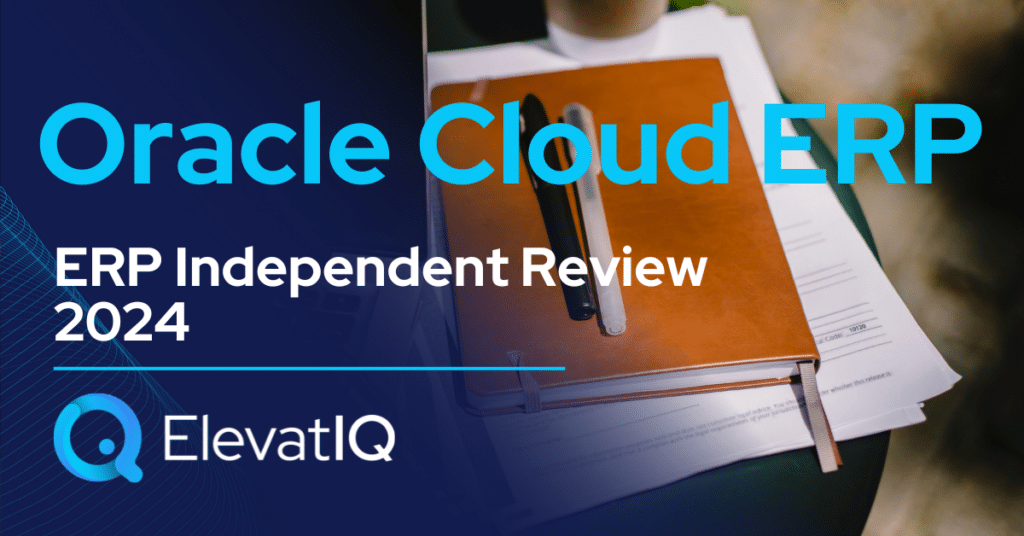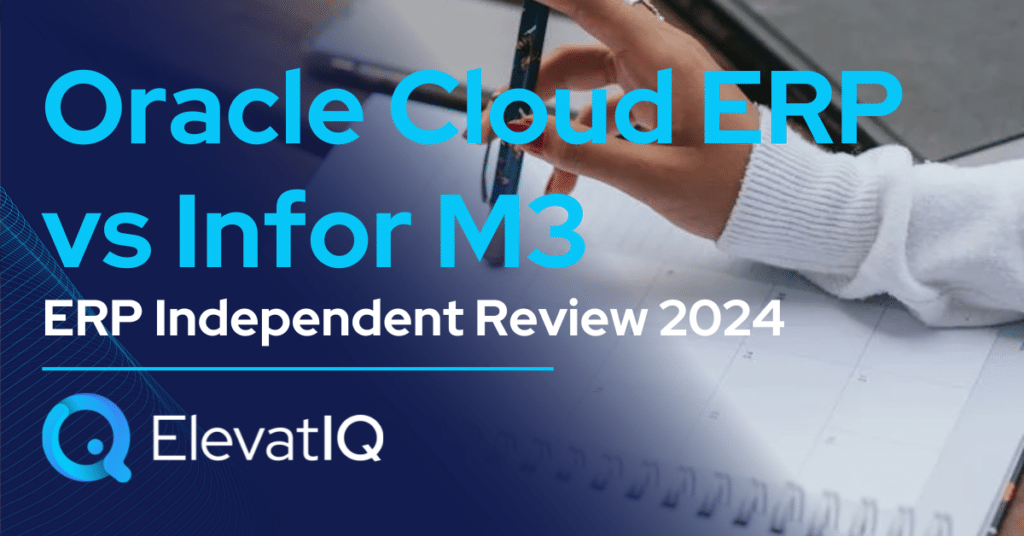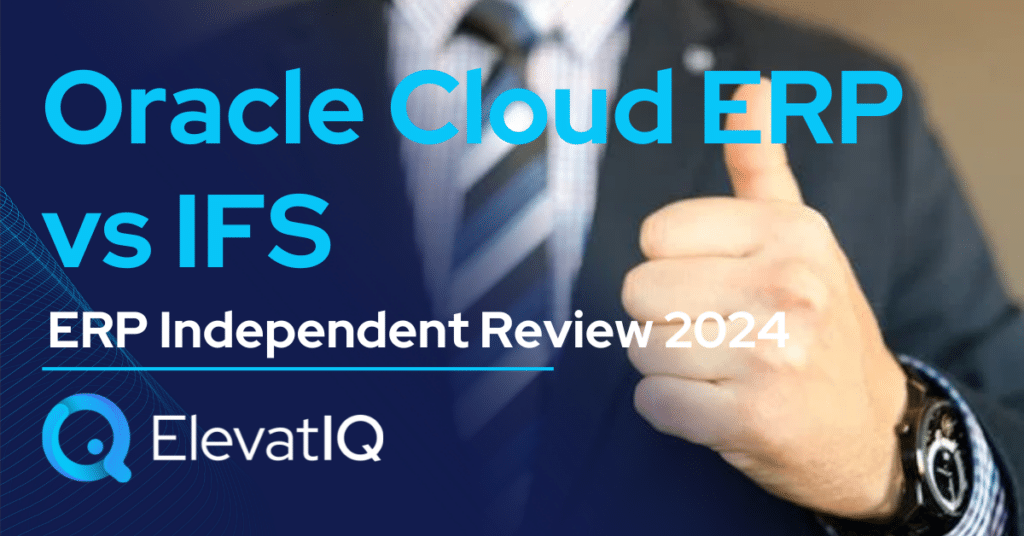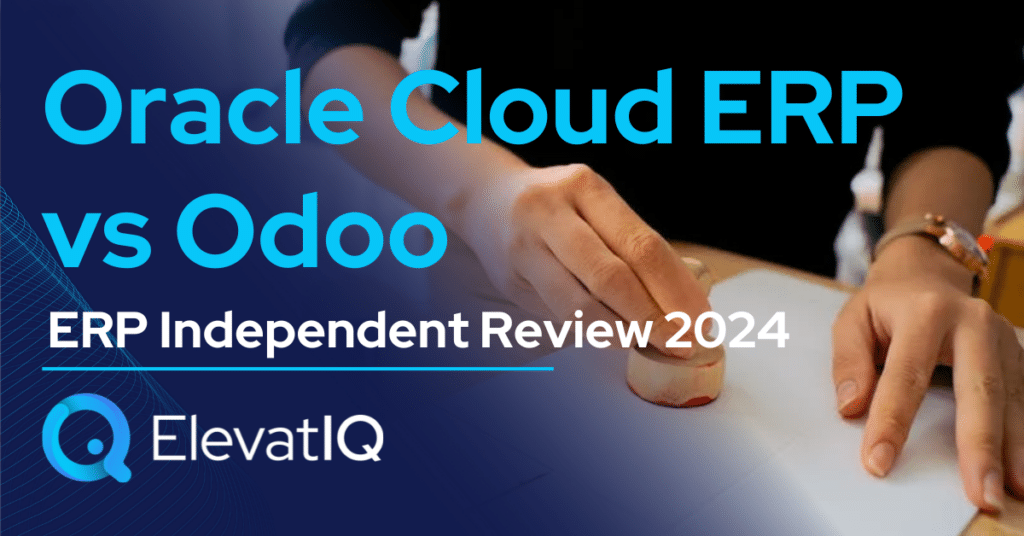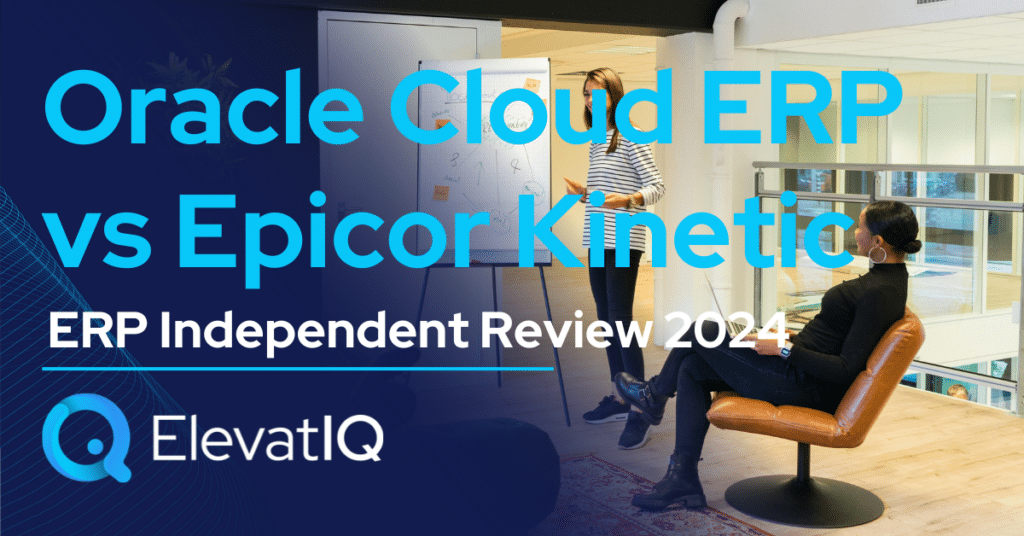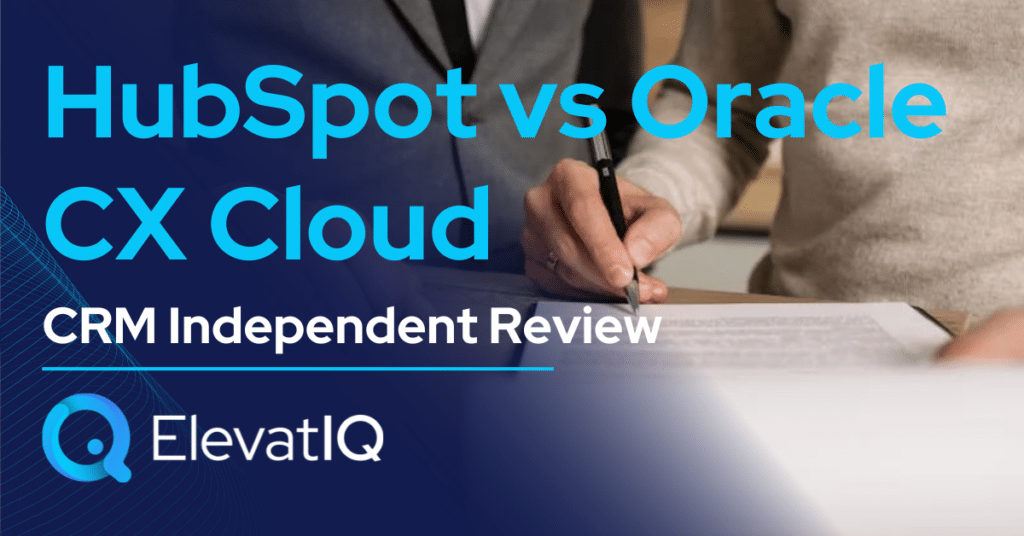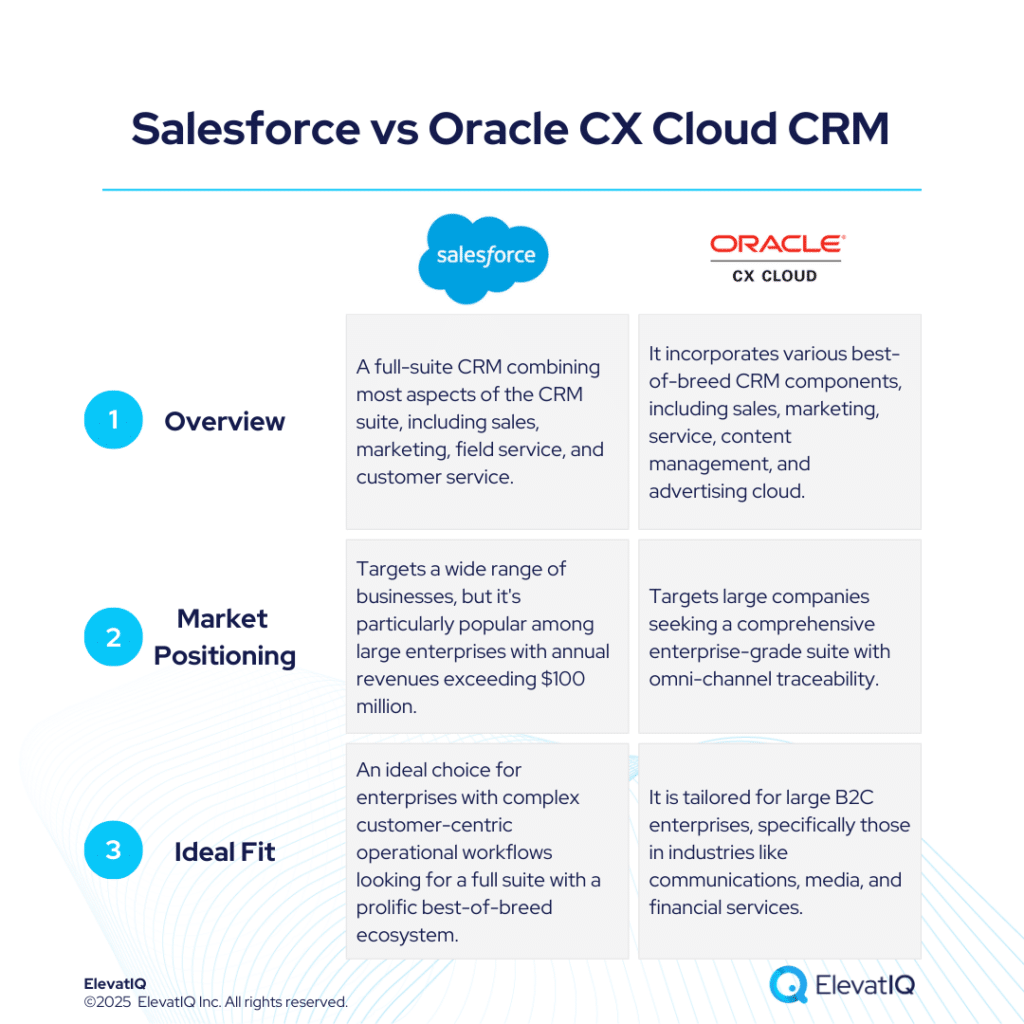What is Oracle Cloud ERP? Oracle Cloud ERP remains a top choice particularly for large companies across diverse industries, including media, telecommunications, construction, energy, oil and gas, and healthcare (post-acquisition of Cerner). It is particularly suitable for organizations with substantial internal IT expertise and a requirement for integrating various proprietary and third-party software systems, such as patient claims management or utility billing solutions.
Oracle Cloud ERP is well-suited for global companies using it as their corporate financial ledger while employing other systems at the subsidiary level. Its robust financial capabilities cater to companies needing ledger-level security and hierarchical financial reporting, such as LOB, functions, or funds. Additionally, it seamlessly integrates a powerful HCM solution along with a natively integrated EPM solution.
Oracle Cloud ERP excels in risk management, advertising, and Cx cloud, particularly catering to industries like financial services and insurance. While it is a superior fit for service-centric industries, its success in product-centric industries has been limited. Often used as a corporate ledger, it might deploy another operationally rich solution at the subsidiary level in certain industries. Despite its strength for large enterprises, Oracle Cloud ERP is not the ideal choice for SMB customers.
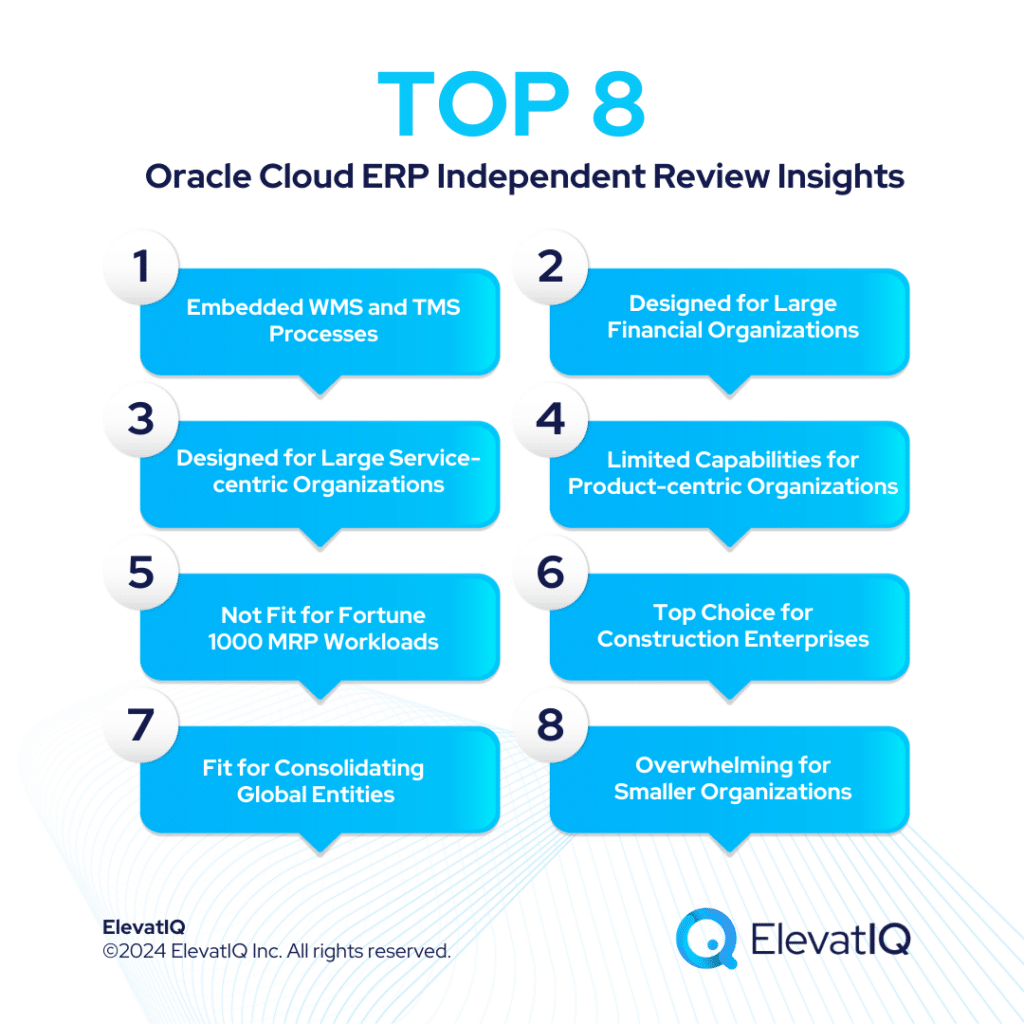

Key Review Insights of Oracle Cloud ERP
1. Embedded WMS and TMS Processes
The embedded WMS and TMS processes within the ERP solution offer tailored functionalities that are especially beneficial for logistics and healthcare-focused organizations. These industries often deal with intricate supply chain operations, requiring meticulous inventory management and also efficient transportation logistics. Moreover, for services-centric organizations with leaner inventory management needs, the embedded WMS and TMS provide scalable solutions that align with their operational requirements.
2. Designed for Large Financial Organizations
The product architecture is tailored to particularly accommodate the intricate requirements of expansive financial enterprises. It facilitates the management of extensive sub-ledger hierarchies, also ensuring meticulous organization and tracking of financial data across various levels of the organization. This hierarchical structure also allows for granular control and visibility into financial operations. It has the ability to conduct subsidiary-level book closures, providing the flexibility to manage financial processes at a more localized level while maintaining overall financial integrity. Furthermore, it also offers support for user-defined books, catering to the diverse accounting needs of branch, fund, partnership accounting, etc.
3. Designed for Large Service-centric Organizations
The embedded HCM, CRM, and CPQ processes cater particularly well to large service-centric organizations. These organizations typically operate with leaner inventory and operational needs, focusing more on delivering services rather than managing extensive inventories or complex manufacturing processes. Furthermore, the P2P workflows are tailored to meet the needs of indirect procurement organizations.
4. Limited Capabilities for Product-centric Qrganizations
While it provides robust functionality for many aspects of business operations, including finance, procurement, and supply chain management, some organizations, particularly those with a strong focus on product-centric operations, may find certain areas of the platform less accommodating to their specific needs. The product-centric organizations requiring more advanced capabilities such as integrated MES or PLM, the standard P2P functionality may lack the depth or customization options necessary to fully support complex manufacturing and product development workflows. Furthermore, product-centric organizations with intricate manufacturing processes may encounter limitations in configuring highly customized products. They might also face limitations while managing engineering changes seamlessly between the CPQ system and manufacturing operations.
5. Not Fit for Fortune 1000 MRP Workloads
It is great as a financial ledger. However, when it comes to managing complex products with serialized structures or overseeing intricate BOMs within large enterprises, certain challenges may arise. Large enterprises dealing with such complexities may also find that Oracle Cloud ERP requires significant processing time and resources to handle these tasks efficiently. As a result, there might be potential delays or performance issues, impacting the overall operational efficiency. Moreover, in environments where there are operational and financial synergies among different entities or business units, Oracle Cloud ERP’s adaptability and integration capabilities may face testing.
6. Top Choice for Construction Enterprises
In contrast to SAP S/4 HANA and Microsoft Dynamics 365 F&O, Oracle ERP Cloud stands out as a top choice for construction enterprises. Thus, providing tailored operational features. Its construction-focused portfolio includes Oracle Aconex for design and coordination, Primavera for project management, and also Textura for subcontractor invoicing. It also includes tools for pre-construction collaboration, fostering seamless cooperation between contractors and subcontractors.
7. Fit for Consolidating Global Entities
Oracle Cloud ERP is an excellent choice particularly for enterprises seeking to consolidate global entities seamlessly within a single database. Thus, minimizing the need for numerous subsidiary-level ERP systems in a two-tier setting.
8. Overwhelming for Smaller Organizations
For companies transitioning from QuickBooks or particularly smaller ERP systems, the extensive data model and translation demands of Oracle Cloud ERP may pose challenges. The complexity of managing and translating data could overwhelm these companies, particularly hindering their successful adoption of the product.
Key Features of Oracle Cloud ERP
Financial Management
In this section, we explore and analyze the financial management module of Oracle Cloud ERP, shedding light particularly on their features and capabilities.
| Financial Management | Features | |
| Accounting and Control | Helps streamline financial operations through automated processes, standardized controls, and enhanced joint venture management, while ensuring compliance and efficiency across global operations. | |
| Accounting Hub | Helps establish a unified and adaptable accounting platform for enterprise-wide financial processes, ensuring harmonized data, trusted information, and powerful processing capabilities. | |
| Payables and Expenses | Helps optimize cash management and streamline payables through dynamic discounts, touchless invoicing, shared services, and accelerated expense management. | |
| Receivables and Cash | Helps enhance cash management and customer satisfaction through streamlined invoicing, personalized services, automated cash forecasting, and compliance with revenue recognition standards. | |
| Asset and Lease Management | Helps streamline asset management with automated lifecycle processes, diverse tax depreciation strategies, and compliance with ASC 842 and IFRS 16 standards. | |
| U.S. Federal Financials | Helps enhance US federal accounting efficiency, accuracy, and compliance while reducing operational costs through automation and improved financial reporting capabilities. | |
| Environmental Impact Tracking | Helps monitor and report supply chain emissions and environmental impacts efficiently by capturing and tracking supplier, item, and invoice data in Cloud ERP. |
Project Management
In this section, we explore and analyze the project management module of Oracle Cloud ERP, shedding light particularly on their features and capabilities.
| Project Management | Features | |
| Plan, Schedule, and Forecast | Helps to efficiently plan, schedule, collaborate, and analyze projects with streamlined resource allocation and predictive insights for proactive decision-making. | |
| Resource Management | Helps manage resources by matching skills to projects, balancing capacity with demand, monitoring workload, and also aligning talent with project needs to maximize productivity and retention. | |
| Cost Management and Control | Helps ensure standardized cost capture, comprehensive cost control, and real-time visibility into project costs and commitments with Oracle Cloud’s integrated cost management solutions, augmented by Oracle Digital Assistant for personalized project costing insights. | |
| Billing and Revenue Management | Helps optimize cash flow and ensure contract compliance with streamlined customer invoicing, project billing controls, and flexible revenue recognition processes. | |
| Project Asset Management | Helps manage capital projects, streamline processes, and also gain real-time insights into project performance for informed decision-making. | |
| Grant Management | Helps manage grant funds throughout the post-award lifecycle. Thus, ensuring spending control, maximizing reimbursements, and automating sponsorship invoices for diverse formats. | |
| Program Management and Reporting | Helps optimize business benefits by efficiently tracking and coordinating related projects within programs. Thus, enabling informed decision-making and seamless communication with stakeholders. |
Procurement
In this section, we explore and analyze the procurement module of Oracle Cloud ERP, shedding light particularly on their features and capabilities.
| Procurement | Features | |
| Supplier Management | Helps enhance supplier collaboration, performance, and risk management through a comprehensive platform offering self-service portals, performance measurement, and proactive risk mitigation strategies. | |
| Sourcing | Helps enhance cost efficiency and value by leveraging analytics-driven sourcing strategies to optimize productivity, streamline negotiations, and maximize savings. | |
| Procurement Contracts | Helps enhance contract efficiency and compliance while minimizing legal involvement, mitigating supplier risks, and improving visibility into contract portfolios. | |
| Purchasing | Helps enhance procurement efficiency with a user-friendly shopping experience, streamlined purchasing processes, and also automated payment management to ensure compliance and cost savings. | |
| Direct Procurement | Helps optimize supply chain resilience and project-driven operations while ensuring customer satisfaction through efficient order processing and automated replenishment purchases for uninterrupted production. | |
| Procurement Analysis | Helps enhance procurement efficiency through AI-driven spend classification, insightful spend analysis, dynamic category intelligence, and also proactive supplier performance management. |
Risk Management and Compliance
In this section, we explore and analyze the risk management and compliance module of Oracle Cloud ERP, shedding light particularly on their features and capabilities.
| Risk Management and Compliance | Features | |
| Monitoring and Control of User Access Automation | Helps ensure compliance and security by designing custom roles, detecting SoD violations in access requests, monitoring sensitive access, generating SoD reports, and automating user access reviews. | |
| AI Monitoring of User Activity | Helps automate monitoring of critical configurations and financial transactions to identify unauthorized changes, fraud, and ensure process integrity across procure-to-pay, record-to-report, order-to-cash, and hire-to-retire processes. | |
| Managing Internal Controls | Helps manage internal controls and streamline risk assessment through automated monitoring and unified collaboration platforms. |
Enterprise Performance Management (EPM)
In this section, we explore and analyze the EPM module of Oracle Cloud ERP, shedding light particularly on their features and capabilities.
| Enterprise Performance Management (EPM) | Features | |
| EPM Platform | The platform serves as a framework for both technical and functional components across Cloud EPM processes, offering a unified user experience and simplified administration across diverse business functions. | |
| Planning | Helps create agile, interconnected plans, spanning scenario modeling, long-range planning, budgeting, and line-of-business planning, all based on industry best practices. | |
| Profitability and Cost Management | Helps gain insights into your highest revenue-generating products or business segments. Also, develops transparent allocation models for analyzing profitability, shared service costing, IT financial management, and tax transfer pricing. | |
| Financial Consolidation and Close | Helps respond business needs and compliance standards through built-in functionalities spanning the entire close process. | |
| Account Reconciliation | Helps automate reconciliations and transaction matching to enhance financial statement accuracy while mitigating security and risk concerns. | |
| Tax Reporting | Helps align corporate financial reporting and taxation for improved visibility and compliance, providing transparent tax processes, including tax provision and country-by-country reporting (CbCR). | |
| Narrative Reporting | Helps collaboratively author and publish financial, management, and regulatory report packages. | |
| Freeform | It combines the versatility of Essbase with the scalability and governance of SaaS. | |
| Enterprise Data Management | Helps oversee business transformation through enterprise data management, encompassing governance, visualization of change data, and also hierarchy administration. |
ERP Analytics
In this section, we explore and analyze the ERP analytics module of Oracle Cloud ERP, shedding light particularly on their features and capabilities.
| Business Analytics | Features | |
| General Ledger | Helps gain insights into profitability drivers, optimize cash flow, and easily analyze sub-ledger details with prebuilt KPIs and metrics. | |
| Receivables | Helps enhance revenue analysis and collection efficiency with prebuilt tools for in-depth revenue analysis, DSO improvement, and AR aging analysis. | |
| Payables | Helps enhance payment efficiency by tracking vendor payments, improving days payable outstanding (DPO), and analyzing payment aging trends visually. | |
| Spend | Helps gain comprehensive insight into company spending, analyze across categories, and minimize non-compliant spend to optimize working capital alignment between finance and procurement. | |
| Expenses | Helps detect fraud and ensure policy compliance Also, tracks expense processing time to maintain efficiency and integrity. | |
| Procurement | Helps identify cost-saving opportunities, streamline procure-to-pay processes, and minimize supplier risk with prebuilt analytics. | |
| Project | Helps monitor budget variances, control project costs, gain insights on revenue trends, and also integrate project data across departments for better decision-making. | |
| Assets | Helps gain insights into asset health, monitor capital and operating assets, and also optimize return on assets for improved financial forecasts. | |
| Accounting Hub | Helps establish a system for accounting data insights, uncover operational and financial connections. Thus, also helps attain a cross-functional view of the business. |
Pros and Cons of Oracle Cloud ERP
| Pros | Cons |
| The product architecture supports the needs of large complex financial organizations with deep sub-ledger hierarchies. | While functionally capable, transactional and financial traceability might not be as intuitive for large, complex enterprises. |
| Oracle Cloud ERP has an ecosystem of experienced consultants capable of handling the architecture of such complex enterprises. | The data model and translations required to be successful with the product may be too overwhelming for particularly companies outgrowing QuickBooks or other smaller ERP systems. |
| The embedded HCM and CRM processes are suitable for large non-profit organizations. The P2P workflows are also friendlier for the indirect procurement needs of non-profit organizations. | Might struggle with the complex MRP runs hitting millions and millions of costing, scheduling, and also WIP industries. |
| The workload Oracle Cloud ERP is designed to process millions of GL entries per hour. | Longer time in customizing and configuring as the software design may consist of unnecessary allocation, commitment, and approval functionality for large companies. |
Conclusion
In conclusion, Oracle ERP Cloud stands as a versatile solution, particularly tailored for large enterprises across various industries, from media to healthcare. Its robust financial management capabilities make it a top choice for organizations particularly seeking comprehensive ledger-level security and hierarchical reporting. Moreover, its seamless integration of HCM and EPM functionalities further enhances its appeal, particularly for service-centric industries where lean inventory management and efficient project tracking are essential.
However, despite its strengths, Oracle ERP Cloud may present challenges for organizations transitioning from smaller ERP systems, particularly in managing complex data models and translations. Additionally, while it excels in certain areas like risk management and advertising, its fit for product-centric organizations remains limited. Nevertheless, with its tailored features for construction enterprises and its ability to consolidate global entities efficiently, Oracle ERP Cloud continues to be a compelling option for large-scale enterprises seeking to optimize their operations and financial management on a global scale. Also, companies may benefit from consulting an independent ERP consultant who can provide valuable insights and assessments to determine if Oracle Cloud ERP aligns seamlessly with their organizational requirements.



